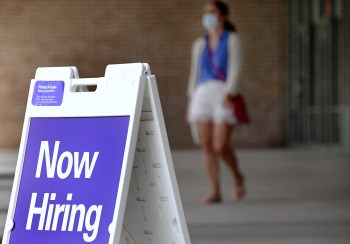Who are the 11 million undocumented immigrants?
The announcement on Capitol Hill today that a group of bipartisan senators are going to give immigration reform another shot will mean a new round of political debate — especially over the proposal to create a path to citizenship for many of the immigrants currently living in the U.S. illegally. But politics aside for a moment, we had a more basic question: Just who are the 11 million or so people who fit that description?
It turns out the answer is more complicated than you might think.
There are lots of stereotypes about illegal immigrants, of course. Jeff Passel, senior demographer at the Pew Hispanic Center, says the one he hears the most — at least the one he can repeat — is “a single young man who’s working in day labor.” That man is probably from Mexico, where he probably snuck across the border.
It’s not that nobody fits that description, says Passel. Plenty do. But, he says, the stereotypes are “mostly wrong.” It turns out that the majority of unauthorized immigrants living here are couples with children, and an estimated 40 percent of illegal immigrants are actually women.
As for jobs, Passel estimates that a third of illegal immigrants work in service jobs, at places like restaurants, or as janitors or cleaners. Many are also employed in cnstruction and food processing. But 10 percent are in professional positions, for example, working as computer engineers.
Then, there’s the sneaking over the border stereotype. The data is tricky to come by, but according to the best available estimates, 50-60 percent of unauthorized immigrants appear to have crossed into the U.S. illegally. But Steve Camarato at the Center for Immigration Studies says 40-50 percent came here legally, at least at first.
“Millions of people came in on temporary visas,” Camarato says. “Tourists, guest workers, foreign students, that sort of thing, and they didn’t go home when the terms of that visa expired.”
One place where the stereotype does get it mostly right, Camarato says, is in terms of the country of origin. An estimated 55-60 percent of illegal immigrants are from Mexico. Which makes sense, he says, since it’s so close. Most of the unauthorized immigrants from Mexico come with few skills and low education, partly because the immigration system is “easier for more educated people to navigate,” he explains.
Also, he says, unskilled workers increase their earning potential more than skilled workers do if they come to the U.S., so “there’s a bigger pull.”
There’s a lot happening in the world. Through it all, Marketplace is here for you.
You rely on Marketplace to break down the world’s events and tell you how it affects you in a fact-based, approachable way. We rely on your financial support to keep making that possible.
Your donation today powers the independent journalism that you rely on. For just $5/month, you can help sustain Marketplace so we can keep reporting on the things that matter to you.


















